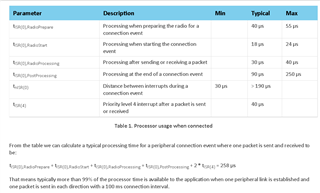There have been several topics on limitations on ADC sampling rate when BLE is in connection.
However, I didn't see notes applicable to the following case:
nRF52832, sampling rate 2500 Hz ( 0.4 ms) . I am using 1 channel only and a timer event to start the sampling, no EasyDMA nor double-buffering. In this case could I expect any limitations in the sampling rate due to handling BLE communication; also, there have been advises to stop the radio while sampling for cleaner ADC output. Are these applicable at such a sampling rate, and where to find an instruction/example how to implement?
Thanks



